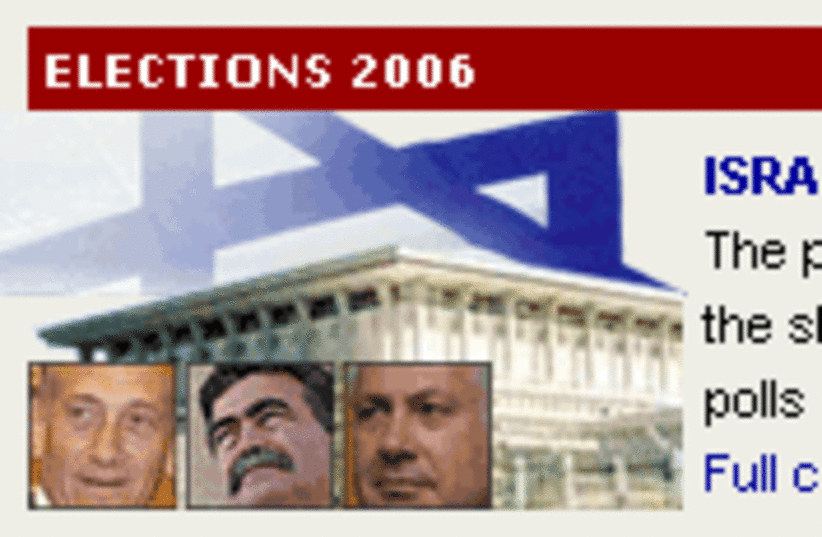The returns from traditional Likud strongholds among the Negev development towns sealed the fate of Likud shoe-ins. In the impoverished southern towns of Yeruham and Ofakim, Likud received 6.8 and 10% respectively, Israel Radio reported. These registered Likud towns, granted their previous patron party with 30 and 32% in the 2003 elections, returning Prime Minister Ariel Sharon to a second term in office.
Labor strategist Eitan Cabel proudly announced Wednesday morning that Labor had defeated Likud and claimed victory in the traditional Likud strongholds of Shlomi and Kiriyat Shmona.
In Jerusalem, Channel 2 reported, United Torah Judaism, the Ashkenazi haredi party, received 18.6% of the city's vote, and its Sephardi counterpart, Shas, took second place with 15.1%. Kadima polled close behind, with 14.5% of the Jerusalemite vote. The national religious front, NU-NRP, followed close behind with 13.5%, while Labor and Likud polled almost identically, gaining 10 and 10.4% respectively in the traditionally right-wing capital city.
In Tel Aviv and Haifa, Likud received only 8% of the votes. Labor Chairman Amir Peretz's hometown of Sderot gave Likud a mere 9.9%, as opposed to the 40% that the party received in the 2003 elections. On the other hand, Labor garnered 25% of the vote.
All was not rosy on the Labor front, however, as the left-center party saw its support chipping away in its traditional kibbutz strongholds. At Deganya A - a kibbutz on the southern shore of Lake Kinneret - Labor lost 5% compared to the 2003 elections, when the party carried the kibbutz with 59.1% of the vote. Kadima finished a distant second place with 16.3%, and Meretz third, with 10.2% of the vote in a sector generally viewed as friendly for the left-wing party.
The Green Leaf Party enjoyed a rare burst of support at the kibbutz, gaining 3% of votes. Had the party polled similarly nationwide, two Knesset seats would have been reserved for the advocates of legalization of marijuana.
While turnout was low nationwide, including in the development towns, exceptionally low turnout rates were recorded among settlers, who usually have a high rate of electoral mobilization. The NU-NRP bloc, recognized as representing the settlers, sank from 13 mandates to 9.
The lowest rates were found among the Beduin community in the south, where voter turnout hovered around 30%.
In contrast, the haredi communities of Modi'in Ilit and Beit El recorded over 90% turnout, far above the national average.

